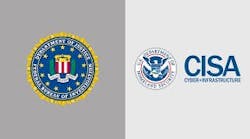The New York Police Department, the F.B.I. and the city's health department have agreed for the first time on a set of rules that will govern investigations of suspected biological attacks in the city, detailing the roles the agencies will play as well as how confidential medical information is to be shared.
The ''protocol,'' a six-page document that officials regard as something of a remarkable cooperation agreement, resulted in part from lessons learned in New York during the 2001 anthrax letter attacks, which killed five people in Florida and the Northeast and infected more than a dozen others in the months after the Sept. 11 strikes.
The anthrax investigations, and several subsequent inquiries into suspected germ attacks, were strained by tension between health and law enforcement officials over turf and procedures.
The accord, which was worked out in confidential, sometimes contentious meetings over the last two years, states that while law enforcement officials have the lead in investigating any terrorist crime, such investigations must be conducted jointly with the Department of Health and Mental Hygiene since physicians are likely to be the first to identify a victim of a germ attack.
To aid that effort, the protocol agreement details some novel compromises among agencies that sometimes have competing interests.
For instance, law enforcement officials, in the course of a bioterrorism investigation, will have access to the once typically confidential medical information of those who might have become infected. But the police and F.B.I. must keep such information confidential. And to encourage sick people to seek medical help, law enforcement agencies have agreed essentially to overlook a sick person's immigration problems or minor criminal activities.
The agreement also lays out some minor but still meaningful tactics. For example, law enforcement officials involved in interviews of patients will, by design, not wear uniforms, to avoid intimidating possible victims. And while patients will be interviewed jointly by teams of medical and law enforcement officials, physicians will be authorized to ask police and federal agents to leave the room.
''This is a groundbreaking agreement in uncharted waters,'' said Michael A. Sheehan, the Police Department's deputy commissioner for counterterrorism. ''Both law enforcement and the public health community have made some tough compromises on what they consider sacred ground. But New Yorkers will be safer and healthier for it.''
With the agreement, which was signed a month ago by Thomas R. Frieden, the health commissioner; Raymond W. Kelly, the police commissioner; and Pasquale J. D'Amuro, the assistant director of the F.B.I.'s New York office, New York becomes the first city in the nation to have adopted such a formalized protocol.
Richard A. Falkenrath, President Bush's former deputy homeland security adviser, said that he knew of no comparable agreement at the federal level and that New York was ahead of other cities in trying to systematically sort through the roles of public health and law enforcement officials in a potential bioterrorist attack. ''This is in the public interest to do,'' Mr. Falkenrath said.
A copy of the internal protocol was provided to The New York Times. It provides for joint training of law enforcement and public health officials that is scheduled to start in January.
The agreement has not solved all outstanding issues. For instance, it does not state when and how quickly public health officials must notify the F.B.I. and police if they come across someone who may be infected with a dangerous germ. Officials said that law enforcement and health officials were still discussing which germs should require immediate notification and joint investigations as part of a separate agreement, a so-called ''annex'' to the broader agreement.
According to a draft of the annex, the city's health department is to provide immediate notification of the detection of illnesses that could involve nine pathogens, including germs that cause anthrax, plague, and such virally induced, highly infectious diseases as smallpox and Ebola. But the Police Department is trying to broaden that list to include germs that also cause Q fever and tularemia, which though naturally occurring, have also been studied by several countries for use as potential germ weapons.
In areas of disagreement concerning the specifics of how the joint efforts will work, law enforcement and health personnel may rely on what one official called the document's ''creative ambiguity.''
''A lot of this has to do with trust that has developed between the people who have worked together on bioterrorism investigations,'' said Dr. Dani Margot-Zavasky, a physician with the Police Department who helped draft the accord.
Phil T. Pulaski, assistant chief of the Police Department's counterterrorism bureau, said the accord reflected an effort to institutionalize that trust, along with the techniques and procedures that have developed over time. The accord was filled with qualifiers because of what he called the ''knucklehead factor'' -- the ''one-in-one-hundred chance that someone will try to wave this document around to assert authority in a spirit that was not intended.''
The effort to draft such rules actually predate the 9/11 and anthrax letter attacks of 2001, some officials said. William A. Zinnikas, the weapons of mass destruction coordinator for the F.B.I.'s New York office, said he and Marcelle Layton, his counterpart from the city's Department of Health and Mental Hygiene, began discussing the need for such guidelines in 1999.
''It was derived from a common acknowledgment of the problems we would all face if an incident of bioterrorism were to develop in New York City,'' Mr. Zinnikas said.
But the effort did not move at a ''lightning pace'' until after the 9/11 and anthrax attacks, Mr. Pulaski said. ''Before that, there was just no immediacy.''
The communication gaps, turf disputes between departments, fear of sharing information, and other complications highlighted by the anthrax letter attacks, a crime that remains unsolved, were reinforced by other, less well publicized bioterrorism scares, officials said.
Law enforcement and public health officials referred specifically to an investigation in the summer of 2003 of a suspected case of brucellosis, also known as undulant fever, a disease that can be caused by a biological attack but that is usually acquired from consuming unpasteurized dairy products.
Accounts of the tension vary, but officials said that after a Syrian man checked himself into a New York hospital and seemed to be suffering from an illness that could have been deliberately induced, the medical staff resisted turning over to the police potentially relevant information about him and his case. The police, according to two separate accounts of the case, reacted by pursuing the investigation very aggressively at the hospital.
Encouraged by the health department, the medical staff at the hospital finally began cooperating more fully. Both the medical investigators and the police eventually concluded that the man had acquired brucellosis, which is not contagious person-to-person, naturally during a vacation back home.
Some physicians continue resisting the trend in New York and at the federal level toward joint investigations by medical and law enforcement officials, and, in particular, the sharing of sensitive medical data that identify individuals by name.
Victor Sidel, a past president of the American Public Health Association and the New York City Public Health Association, expressed concern that such information-sharing might dissuade sick people from seeking medical help and hence, encourage the chances that infectious agents might spread throughout the city.
''I find the provision of such medical information inimical to human freedom and medical care,'' he said. Based on a reporter's description of the protocol, which has not been made public, he said he feared that the agreement negotiated between law enforcement and public health officials might jeopardize civil liberties and fail to provide the security it claims to bolster.
''There must be a balance between human freedom and counterterrorism,'' he said. ''And an agreement like this steps over the line.''
Public health and law enforcement officials disagreed, saying the accord contained many acknowledgments of the need to safeguard sensitive patient information and to underscore the fact that while physicians and police may have common goals, they continue to have separate cultures, rules, and requirements.
''We are not an agent of the police,'' said Dr. Frieden, the health commissioner. He noted that under the agreement, medical records would continue to be controlled by public health officials. ''Our documents do not become declassified,'' he said. ''Unless there is a bioterrorist event, that information is essentially sealed from the public, permanently and forever.''
He said that ''99.999 percent of the time,'' the health department carried out its mandate to protect public health without Police Department help. But in certain rare cases, he added, ''I make the determination that police help would be valuable.''
''Many of us are queasy about sharing health data with anybody, because we take confidentially of health data very seriously,'' said Dr. Frieden, who oversees the nation's largest municipal public health department of some 6,000 people and an annual budget of $1.5 billion. ''There has never been a breach of this confidentiality as far as I know.''
But after the Sept. 11 and anthrax attacks, ''we all became much more aware of the circumstances in which the police and health departments must work together,'' he said.
The document acknowledges what Dr. Zavasky and Chief Pulaski called the differing approaches and concerns of each community. The document notes that all parties to the accord recognized the ''potential chilling effect'' that the presence of law enforcement officers might have on patients being interviewed and on medical professionals. It states, ''it is understood that joint investigations remain essentially a public health epidemiological investigational activity,'' and that the health department is ''not an agent of law enforcement when conducting investigations.''
Nevertheless, securing access to sensitive patient data is sometimes critical, said Mr. Sheehan, the police counterterrorism deputy director, because it may help spot a bioterrorism attack more quickly and by limiting the spread of a deadly germ, save hundreds, and potentially thousands of lives.

